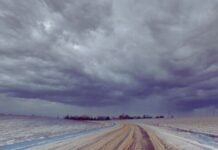According to the Global Change Data Lab, some of the deadliest natural disasters — earthquakes, volcanic eruptions, hurricanes, tsunamis, floods, wildfires, and droughts – kill almost 60,000 people each year.
Natural disasters have been a part of human life since the dawn of time, yet the death tolls from the most ancient of these tragedies have been lost to history. According to a 2020 study published in the journal Proceedings of the National Academies of Sciences, the ancient Mediterranean island of Thera (now Santorini, Greece) witnessed a cataclysmic volcanic explosion that wiped out the whole Minoan civilisation approximately 1600 B.C. But how many people were killed? We’ll never find out.
Historians can, however, estimate the number of fatalities associated with calamities that occurred throughout the common era according to historical records and journals. The following natural catastrophes, sorted from lowest to greatest estimated death toll, are the deadliest of all time, according to such records. (For disasters with a range of death tolls, the disaster is rated by the highest end of the estimate.)
1. THE 1931 YANGTZE RIVER FLOODS
Excessive rains in central China in July and August 1931 created the most lethal natural calamity in global history, the Central China floods of 1931. The Yangtze River overflowed its banks when spring snowmelt combined with the more than 24 inches (600 millimeters) of rain that dropped in July alone. (The Yellow River and other significant waterways had high levels as well.) The book “The Nature of Disaster in China: The flood overwhelmed nearly 70,000 square miles (180,000 square kilometers) and converted the Yangtze into what appeared to be a vast lake or ocean (Cambridge University Press, 2018). Current government estimates place the death toll at roughly 2 million, but some agencies, like NOAA, believe it might have been as high as 3.7 million.
2. THE 1887 YELLOW RIVER FLOOD
In the late 1880s, the Yellow River (Huang He) in China was perilously perched much above most of the land surrounding it, thanks to a series of dikes built to control the river as it flowed through central China’s farmland. These dikes had silted up over time, gradually raising the river’s elevation. According to the “Encyclopedia of Disasters: Environmental Catastrophes and Human Tragedies” (Greenwood Publishing Group, 2008), when heavy rains swollen the river in September 1887, it poured over these dikes into the surrounding low-lying area, inundating 5,000 square miles (12,949 square km). An estimated 900,000 to 2 million people died as a result of the flood.
3. THE 1556 SHAANXI EARTHQUAKE
On January 23, 1556, the world’s deadliest earthquake struck China’s Shaanxi province. According to the Science Museums of China, the temblor, known as the “Jiajing Great Earthquake” for the emperor whose reign it happened during, turned a 621-square-mile (1,000-square-kilometer) swath of the land to rubble. An estimated 830,000 people were killed when their yaodong (loess plateau cave houses) fell. The actual magnitude of the quake has been lost to history, but geophysicists today estimate it to be approximately magnitude 8.
4. THE 1970 BHOLA CYCLONE
On November 12-13, 1970, a tropical storm impacted what is now Bangladesh (then East Pakistan). The storm’s strongest winds measured 130 mph (205 kph), making it the equivalent of a Category 4 major hurricane on the Saffir-Simpson Hurricane Scale, according to NOAA’s Hurricane Research Division. A 35-foot (10.6-meter) storm surge poured over the low-lying islands bordering the Bay of Bengal before it made landfall, causing catastrophic flooding.
The storm surge, along with a lack of evacuation, resulted in an estimated 300,000 to 500,000 deaths. A report by the National Hurricane Center and the Pakistan Meteorological Department in 1971 acknowledged the difficulty of correctly quantifying the death toll, particularly given the inflow of seasonal labourers in the area for the rice harvest. According to the World Meteorological Organization, the Bhola storm is the deadliest tropical cyclone on record as of the writing of this article. It also cost an estimated $86 billion in damages. If you want you can also read – Air Pollution Kills 7 Million People a Year: WHO
5. THE 2010 HAITI EARTHQUAKE
On January 12, 2010, a magnitude 7.0 earthquake devastated Haiti approximately northwest of Port-au-Prince, making it one of the three deadliest earthquakes in history.
Haiti’s status as one of the poorest countries in the Western Hemisphere, along with the country’s lack of experience with severe earthquakes, made it especially vulnerable to destruction and loss of life. The earthquake impacted up to 3 million people. Estimates of mortality varied widely; initially, the Haitian government reported 230,000 deaths, but in January 2011, officials amended that amount to 316,000. According to a 2010 research published in the journal Medicine, Conflict, and Survival, the number of deaths was around 160,000, while the USGS claimed even lower figures — under 100,000. These disparities illustrate the difficulties of recording deaths even in the modern period, let alone the political squabbling over “official” figures.
6. (TIE) THE 1881 HAIPHONG TYPHOON
The 1881 typhoon that devastated the port city of Haiphong in northeastern Vietnam on October 8 tied the Coringa storm as the sixth deadliest natural disaster. This storm is also thought to have killed 300,000 people.
7. THE 1920 HAIYUAN EARTHQUAKE
“The Haiyuan earthquake had the highest magnitude and intensity recorded in China in the twentieth century,” Deng Qidong, a geologist from the Chinese Academy of Sciences, remarked at a conference in 2010.
The earthquake that devastated Haiyuan County in north central China on December 16, 1920, also shook adjacent Gansu and Shaanxi Provinces. It was apparently a 7.8 on the Richter scale, although China now claims it was an 8.5. There are also disparities in the number of people killed. The USGS reported 200,000 casualties, while a 2010 analysis by Chinese seismologists suggested that the death toll could have been as high as 273,400. According to a 2020 study published in the journal Landslides, the region’s heavy concentrations of loess soils (porous, silty sediment that is particularly unstable) generated major landslides, which were responsible for nearly 30,000 of these deaths.
Read More: Ancient Planet Secret: Europe Cooled as Planet Warmed After Last Ice Age, Study Finds
8. THE A.D. 526 ANTIOCH EARTHQUAKE
As with other millennia-old tragedies, a specific death toll for the Antioch earthquake is difficult to come by. When the temblor struck the Byzantine Empire city (now Turkey and Syria) in May 526, it killed around 250,000 people, according to contemporary writer John Malalas. Malalas blamed the calamity on God’s anger and said that fires destroyed everything in Antioch that the earthquake did not.
According to a report published in The Medieval History Journal in 2007, the death toll was larger than it would have been at other times of the year because the city was packed with tourists celebrating Ascension Day, the Christian feast commemorating Jesus’ ascension into heaven.
9. THE 1976 TANGSHAN EARTHQUAKE
According to a report by the US Geological Survey (USGS), a magnitude 7.8 earthquake destroyed the Chinese city of Tangshan at 3:42 a.m. on July 28, 1976. Tangshan, an industrial city with a population of around 1 million people at the time of the tragedy, experienced a stunning 240,000 casualties. While this was the official death toll, several experts believe it was greatly understated and that the actual death toll was closer to 700,000. According to reports, 85% of Tangshan’s buildings collapsed, and tremors were felt more than 100 miles (180 km) away in Beijing, China. Tangshan was reconstructed to its former splendour over a period of several years.
10. (TIE) THE 2004 INDIAN OCEAN EARTHQUAKE AND TSUNAMI
A catastrophic magnitude 9.1 earthquake happened undersea off the west coast of Sumatra, Indonesia, on December 26, 2004. The tremor triggered a catastrophic tsunami, killing around 230,000 people and displacing almost 2 million in 14 South Asian and East African countries. The tsunami reached land in as little as 15 to 20 minutes after the quake hit, traveling at speeds of up to 500 mph (804 kph), giving inhabitants little time to flee to higher ground.
According to World Vision, a humanitarian aid group, the tsunami wave reached over 100 feet (30 meters) high in some spots, particularly in the hardest-hit Indonesia.
The earthquake and tsunami are estimated to have caused $10 billion in damage. According to NOAA’s National Centers for Environmental Information, this is the world’s third greatest earthquake since 1900, and its tsunami killed more people than any previous tsunami in recorded history.














![Technical Aspects of 844 Area Code in 2024 [Detail Guide] 844 Area Code](https://articleify.com/wp-content/uploads/2024/01/844-Area-Code-150x150.jpg)














